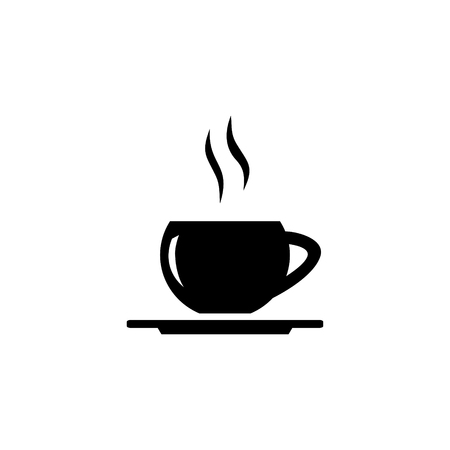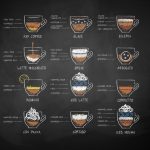Understanding Coffee Bean Size
When it comes to brewing a great cup of coffee, bean size plays a bigger role than most people realize. In American-style coffee preparation—think drip brewers, pour-overs, and even cold brews—uniformity in bean size helps ensure consistent flavor and proper extraction. Let’s break down why size matters and how it influences your morning brew.
Why Bean Size Affects Brewing
Coffee beans come in various sizes depending on the origin, variety, and processing method. During roasting and brewing, these size differences can impact how evenly the beans are roasted and how efficiently they’re extracted during brewing. Smaller beans tend to roast faster and extract quicker, while larger beans take more time. If you mix different sizes together, you risk uneven flavors—some over-extracted (bitter), others under-extracted (sour).
How Size Impacts Flavor Development
Here’s how varying bean sizes influence flavor:
| Bean Size | Roasting Impact | Brewing Impact | Taste Profile |
|---|---|---|---|
| Small Beans | Roast quickly; risk of overdevelopment | Extract faster during brewing | Bolder flavors, but risk of bitterness |
| Large Beans | Roast slower; may underdevelop if not adjusted | Takes longer to extract fully | Milder taste, sometimes underwhelming if under-extracted |
The Importance of Uniform Bean Size
If you’ve ever bought high-quality specialty coffee in the U.S., chances are the roaster ensured uniform bean sizing. Why? Because when all beans are roughly the same size, they roast evenly and brew consistently. This is especially important for popular American brewing methods like Chemex or batch brewers where precision really affects taste. Uniformity leads to balance—no single note overpowering another.
A Practical Tip for Home Brewers
If youre grinding your own beans at home, try to check for consistency in size before grinding. Investing in quality whole beans from reputable roasters usually means better uniformity, which translates into a smoother, well-balanced cup every time.
Coffee may seem simple on the surface, but little details like bean size can make a big difference in what ends up in your mug.
2. The Role of Bean Density in Brewing
When it comes to brewing a great cup of coffee, bean density plays a bigger role than most people realize—especially for specialty coffee enthusiasts across the U.S. Higher-density beans often come from high-altitude farms and tend to be more flavorful and complex. But how exactly does density affect your brew? Let’s break it down.
Why Density Matters
Denser beans are packed with more cellular structure. This means they’ve developed under slower-growing conditions, allowing sugars and flavors to concentrate over time. As a result, these beans generally offer brighter acidity, deeper sweetness, and more nuanced flavor profiles.
Grind Consistency
One of the first things density affects is how beans grind. Denser beans are tougher and require more force to grind evenly. If your grinder isn’t up to the task, you might end up with uneven particle sizes—leading to over-extraction or under-extraction.
| Bean Density | Grind Result | Brew Impact |
|---|---|---|
| High-Density | Requires consistent, precise grinding | Better flavor clarity if ground properly |
| Low-Density | Easier to grind but may produce fines | Muddier flavors or bitterness |
Water Flow & Extraction
The way water interacts with ground coffee depends heavily on density. High-density beans tend to create tighter-packed grounds, slowing down water flow during brewing. This can be a good thing—it allows more time for flavor extraction—but only if your grind size and brew method are dialed in correctly.
Brew Methods That Favor High-Density Beans:
- Pourover (e.g., V60 or Chemex): Lets you control flow rate and time.
- Espresso: High pressure extracts complex flavors well.
- Aeropress: Allows experimentation with steep time and pressure.
Flavor Intensity & Complexity
If you’re chasing that perfect balance of sweetness, acidity, and body in your cup, density is key. Higher-density beans tend to unlock more vibrant notes—think citrus, berries, florals—while lower-density beans may lean toward nuttier or chocolaty tones but lack brightness.
| Coffee Profile | Tied to Bean Density? | Taste Notes |
|---|---|---|
| Ethiopian Yirgacheffe (Washed) | High-Density | Citrus, jasmine, tea-like body |
| Brazilian Natural Process | Lower-Density | Nuts, chocolate, mellow acidity |
A Quick Tip for Home Brewers:
If youre buying whole bean coffee and using a burr grinder at home, consider adjusting your grind slightly finer for high-density beans. This will help balance out the slower water flow and improve flavor extraction without overdoing it.

3. Color as an Indicator of Roast Level
When youre browsing coffee beans at your favorite local café or roaster, one of the first things you’ll notice is the color of the beans. That color isn’t just for looks—it tells you a lot about how the coffee will taste. The shade of a roasted bean is a direct indicator of its roast level, which significantly affects flavor, body, and acidity.
What Roast Colors Mean
Coffee beans start out green and change color as theyre roasted. Heres a simple guide to what different colors typically mean in terms of roast level and flavor:
| Roast Level | Bean Color | Body | Acidity | Flavor Notes |
|---|---|---|---|---|
| Light Roast | Light brown | Light | High | Bright, fruity, floral |
| Medium Roast | Medium brown | Balanced | Moderate | Smooth, nutty, chocolatey |
| Dark Roast | Dark brown to almost black | Full-bodied | Low | Bitter-sweet, smoky, rich |
Choosing Based on Roast Color
If you prefer a brighter, more acidic cup with complex flavors, go for lighter-colored beans (light roast). These are especially popular in third-wave coffee shops that highlight origin characteristics. On the other hand, if you enjoy a heavier mouthfeel and bold taste, dark-colored beans (dark roast) may be more your style—often favored in traditional American diners or espresso blends.
Pro Tip for Café-Goers:
The next time youre at a specialty café or local roaster, check the bean color before buying. Many places list roast level on their packaging or menu board. If not, don’t hesitate to ask—baristas are usually happy to explain!
Why This Matters for Brewing at Home
The roast color also helps you decide how to brew your coffee. Light roasts tend to shine in pour-over or drip methods where clarity and brightness come through. Darker roasts work great in French press or espresso machines that bring out boldness and crema.
Understanding bean color gives you a quick way to predict flavor and choose the right coffee for your taste preferences—whether youre brewing at home or picking up a bag from your neighborhood roaster.
4. How Size, Density, and Color Work Together
When it comes to brewing a great cup of coffee—especially with popular American methods like pour-over and espresso—the size, density, and color of the beans don’t just matter on their own. They interact in ways that significantly affect flavor, aroma, and overall brew quality. Understanding how these characteristics work together helps coffee lovers and baristas make better choices from bean to cup.
Size + Density = Extraction Control
Larger beans typically come from higher elevations and are often denser. These denser beans take longer to roast evenly but can offer more complex flavors when done right. In brewing, especially with pour-over methods like Chemex or V60, uniform grind size is essential. Denser beans tend to break into more consistent particles during grinding, which means more even extraction and balanced flavor.
Why This Matters for Espresso
Espresso brewing uses high pressure over a short time, so consistency is key. Dense, uniformly sized beans allow for tighter control over shot timing and flavor clarity. If your espresso tastes sour or bitter, uneven grind or inconsistent bean density might be part of the problem.
Color Indicates Roast Level—and Impacts Flavor
The color of the bean gives clues about its roast level, which in turn affects how size and density behave during brewing. Heres a quick breakdown:
| Bean Color | Roast Level | Flavor Profile | Best Brewing Method |
|---|---|---|---|
| Light Brown | Light Roast | Bright acidity, floral notes | Pour-over (V60, Chemex) |
| Medium Brown | Medium Roast | Balanced sweetness and body | Drip or Pour-over |
| Dark Brown / Oily | Dark Roast | Bitter-sweet, smoky tones | Espresso or French Press |
The Interplay in Your Cup
If you’re using a light roast with large, dense beans for pour-over, expect cleaner flavors with higher acidity—great for single-origin coffees. With espresso, medium-sized but very dense beans roasted to a medium-dark level often yield the most satisfying crema and balance of body and flavor.
A Quick Tip for Home Brewers
If youre experimenting at home, try sticking to one variable at a time. For example, use beans of similar size but try different roast levels. Or pick one roast level and explore how different densities affect your brew. Over time, you’ll start to notice how these physical traits shape what you taste in the cup.
Together, bean size, density, and color create a kind of roadmap for predicting how a coffee will brew and taste. Paying attention to all three helps ensure that your next cup—whether it’s an intricate pour-over or a bold espresso—hits all the right notes.
5. Practical Tips for Buying and Brewing
When youre standing in front of rows of coffee bags at your favorite grocery store or browsing online, it can be tough to know which beans will give you the best flavor for your brew style. Heres how to use bean size, density, and color to make a better choice—especially if you love cold brew, drip coffee, or espresso like many Americans do.
Choosing Beans by Size
Bean size can influence how evenly your coffee brews. Larger beans often come from higher altitudes and tend to have more complex flavors. However, consistency matters more than just size alone. If youre using a method like espresso that requires precision, go for beans that are all similar in size to avoid uneven extraction.
Quick Tip:
- Espresso: Choose medium-to-large uniform beans
- Drip Coffee: Medium-sized beans work well
- Cold Brew: Size matters less—look for freshness instead
Picking the Right Density
Bean density often reflects how slowly the coffee cherry matured—denser beans usually mean more flavor. They also require slightly different grind settings when brewing.
| Brew Method | Recommended Bean Density | Grind Adjustment |
|---|---|---|
| Espresso | High (hard beans) | Slightly finer grind |
| Drip Coffee | Medium to high | Standard medium grind |
| Cold Brew | Any (freshness is key) | Coarse grind |
Selecting Beans by Roast Color
The color of roasted beans gives clues about flavor and strength. Lighter roasts keep more origin character and acidity, while darker roasts offer bold, smoky notes. Here’s how roast level pairs with common American brew methods:
| Brew Method | Best Roast Level | Taste Profile |
|---|---|---|
| Cold Brew | Medium to dark roast | Smooth, chocolaty, low acid |
| Drip Coffee | Light to medium roast | Crisp, balanced, aromatic |
| Espresso | Medium-dark to dark roast | Rich, bold, full-bodied |
Smart Shopping Tips
- Check roast date: Fresher is better—look for beans roasted within the last two weeks.
- Avoid oily surfaces: Especially if youre using an automatic grinder; oil can clog machines.
- Taste notes matter: Choose based on flavor preferences like fruity, nutty, or chocolatey.
- Buy whole beans: Grinding right before brewing keeps flavors fresher.
Brew It Right at Home
If You Love Cold Brew:
Use coarse-ground medium-to-dark roast beans and steep for at least 12 hours in cold water. Go for fresh beans with solid body and low acidity.
If Youre into Drip Coffee:
A good automatic drip machine works best with medium-roast, medium-grind beans. Make sure the water temperature reaches around 200°F for optimal extraction.
If Espresso Is Your Thing:
You’ll want dense, uniform medium-dark roast beans ground fine. A burr grinder makes a big difference here—consistency is everything.
Selecting the right coffee beans doesn’t have to be complicated. With a little attention to size, density, and color—and matching them with your favorite brewing method—you’ll enjoy better-tasting coffee every day.

